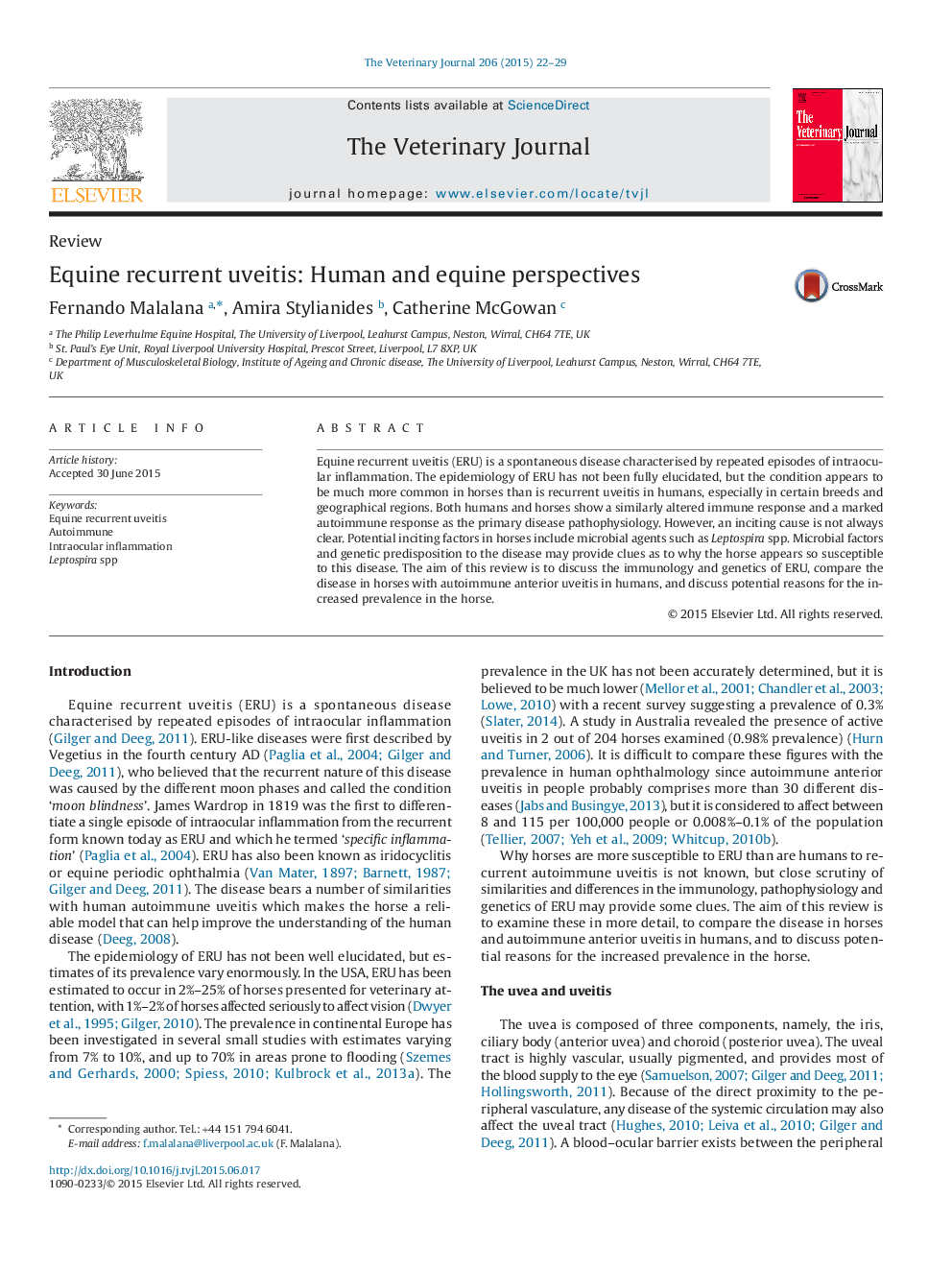| Article ID | Journal | Published Year | Pages | File Type |
|---|---|---|---|---|
| 5797290 | The Veterinary Journal | 2015 | 8 Pages |
â¢Equine recurrent uveitis (ERU) is a spontaneous disease characterised by repeated episodes of intraocular inflammation.â¢Its epidemiology has not been fully elucidated, but ERU appears more common in horses than human autoimmune uveitis.â¢Humans and horses show a similarly altered autoimmune response as the primary disease pathophysiology.â¢Microbial factors and genetic predisposition may provide clues as to why the horse appears so susceptible to this disease.
Equine recurrent uveitis (ERU) is a spontaneous disease characterised by repeated episodes of intraocular inflammation. The epidemiology of ERU has not been fully elucidated, but the condition appears to be much more common in horses than is recurrent uveitis in humans, especially in certain breeds and geographical regions. Both humans and horses show a similarly altered immune response and a marked autoimmune response as the primary disease pathophysiology. However, an inciting cause is not always clear. Potential inciting factors in horses include microbial agents such as Leptospira spp. Microbial factors and genetic predisposition to the disease may provide clues as to why the horse appears so susceptible to this disease. The aim of this review is to discuss the immunology and genetics of ERU, compare the disease in horses with autoimmune anterior uveitis in humans, and discuss potential reasons for the increased prevalence in the horse.
